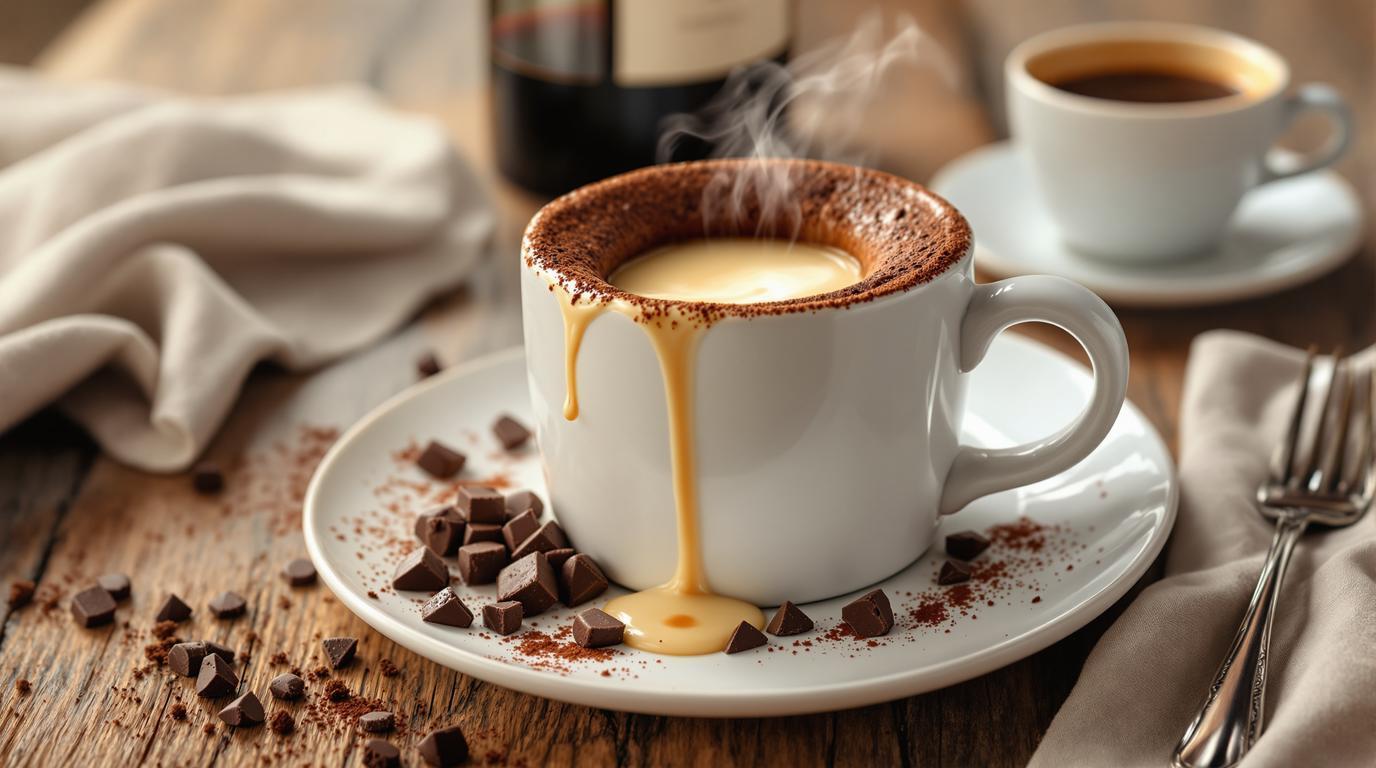I’ve always believed the true magic of cooking lies in transforming simplicity into luxury. During my travels through France, I discovered how a perfect chocolate dessert doesn’t require fancy equipment or hours of preparation. This mug cake embodies that philosophy – a personal-sized indulgence ready in minutes, yet carrying the soul of a traditional French chocolate cake. What surprises most first-timers is how something so quick can deliver such depth of flavor and that perfect molten center that rivals restaurant desserts.
The Story Behind Chocolate Mug Cake
While mug cakes emerged in the early 2000s as microwave cooking gained popularity, this recipe pays homage to classic French individual chocolate cakes. I’ve refined this version during countless late-night recipe testing sessions, drawing inspiration from traditional techniques while embracing modern convenience. The result bridges two worlds: the immediate satisfaction our busy lives demand and the depth of flavor that makes French desserts legendary.
Ingredients Spotlight
For one perfect portion:
- 3 tbsp (25g) all-purpose flour – the structural foundation
- 2 tbsp (24g) white sugar (brown sugar creates a more complex flavor)
- 2 tbsp (14g) unsweetened cocoa powder (Dutch-processed preferred)
- ¼ tsp (2g) baking powder – for that perfect rise
- 3 tbsp (45ml) milk (room temperature)
- 2 tbsp (30ml) vegetable oil (or melted butter for richness)
- ½ tsp pure vanilla extract
- 20g dark chocolate (70% cocoa), roughly chopped
- Tiny pinch of salt
Step-by-Step Guide
1. Select a microwave-safe ceramic mug (approximately 350ml capacity). The material matters – ceramic distributes heat more evenly than glass or plastic.
2. Combine flour, sugar, cocoa powder, baking powder, and salt in your mug. Use a fork to whisk thoroughly, breaking up any cocoa lumps. When I’m in professional kitchens, we sift dry ingredients, but this fork technique works perfectly for small batches.
3. Pour in milk, oil, and vanilla. Mix until just combined – about 20 gentle strokes. The batter should look smooth but not overmixed. This restraint is what separates good mug cakes from great ones.
4. Fold in the chocolate pieces, allowing some to sink toward the bottom where they’ll create a molten core during cooking.
5. Microwave on high (1200W) for exactly 60 seconds. For lower-powered microwaves, add 10-second increments until the top looks set but still appears slightly moist. Alternatively, bake in a preheated 350°F (175°C) oven for 14 minutes.
Expert Techniques
The true secret to mug cake perfection lies in the timing. When I was developing desserts for a Paris bistro, our head chef insisted that chocolate cake should always be “à point” – precisely cooked. For mug cakes, this means removing it when the edges are set but the center remains slightly underdone. The residual heat will continue cooking it to perfection as it rests.
To elevate the flavor profile, add ¼ teaspoon of instant espresso powder to the dry ingredients. This doesn’t make the cake taste like coffee – it intensifies the chocolate notes by activating different flavor compounds. It’s a technique I learned while working alongside a Sicilian pastry chef who applied it to everything from cheesecakes to citrus desserts.
Chef’s Note: Temperature matters significantly with chocolate desserts. If you’re using ingredients straight from the refrigerator, warm the milk slightly before adding. Cold ingredients create an uneven cooking pattern that can leave you with a rubbery cake rather than a tender one.
Presentation & Pairing Ideas
For an elegant serving worthy of a French culinary tradition, transfer your mug cake to a small dessert plate. Crown it with a small scoop of vanilla ice cream or whipped crème fraîche, allowing it to melt slightly into the warm cake. A light dusting of cocoa powder or confectioners’ sugar creates beautiful contrast.
My favorite accompaniment is a small glass of Banyuls – a fortified wine from southern France that complements chocolate’s intensity perfectly. For non-alcoholic pairings, a small espresso provides the ideal bitter contrast to the cake’s sweetness, similar to the balanced flavors in a traditional Italian risotto.
The beauty of this recipe lies in its adaptability. During spring, I fold in fresh raspberries; in autumn, a sprinkle of cinnamon and orange zest creates seasonal magic. Trust your instincts – the foundational technique remains the same while your creativity makes each serving uniquely yours. Remember, in professional kitchens and home kitchens alike, cooking is about confidence, not complexity.
